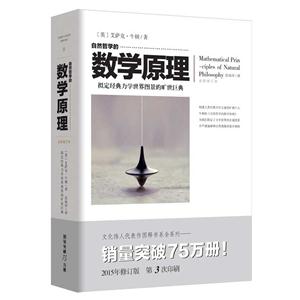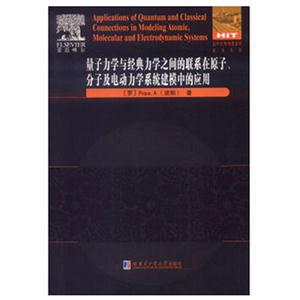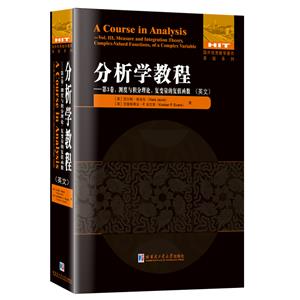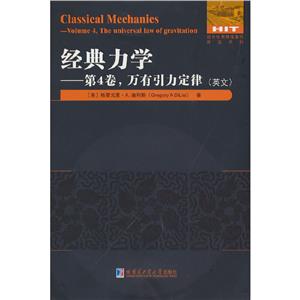
作者:(美)格雷戈·A.迪利斯
页数:132
出版社:哈尔滨工业大学出版社
出版日期:2023
ISBN:9787576707793
电子书格式:pdf/epub/txt
内容简介
本书是一套五卷本的物理学英文版教程的第3卷,本卷主要研究牛顿定律和匀速圆周运动。
目录
Preface
Author biography
Part Ⅰ Newton’s laws of motion
l Motivation
2 Getting ready
2.1 Anticipatory set
2.1.1 Who should(or should not)use the product
2.1.2 How should the product be used
2.1.3 What problems should users expect to encounter
2.2 Objective
2.3 Purpose
3 Giving information
3.1 Instructional input
3.1.1 Newton’s first law ofmotion
3.1.2 Newton’s second law of motion
3.1.3 Newton’s third law of motion
3.1.4 Problem-solving
3.1.5 Category#l:applied forces
3.1.6 Category≠≠2:contact forces
3.1.7 Category≠≠3:field forces
3.2 Modeling
3.3 Checking for understanding
4 Keeping information
4.1 Closure
4.2 Independent practice
4.2.1 Challenge problems
4.3 Peer teaching
4.3.1 General laws
4 3 2 Forces:Tension
4.3.3 Forces:Spring Force
4.3.4 Forces:Frictional Force
4.3.5 Axes
4.3.6 Solving
Part Ⅱ Uniform circular motion
5 Motivation
6 Getting ready
6.1 Anticipatory set
6.2 0bjective
6.3 Purpose
7 Giving information
7.1 Instructional input
7.1.1 What is’uniforln’about’uniform circular motion’?
7.1.2 Acceleration during uniform circular motion
7.1.3 Putting it all together
7.2 Modeling
7.3 Checking for understanding
8 Keeping information
8.1 Closure
8.2 Independent practice
8.3 Peer teaching
8.3.1 Centripetal acceleration
8.3.2 Newton’s laws of motion
编辑手记
Author biography
Part Ⅰ Newton’s laws of motion
l Motivation
2 Getting ready
2.1 Anticipatory set
2.1.1 Who should(or should not)use the product
2.1.2 How should the product be used
2.1.3 What problems should users expect to encounter
2.2 Objective
2.3 Purpose
3 Giving information
3.1 Instructional input
3.1.1 Newton’s first law ofmotion
3.1.2 Newton’s second law of motion
3.1.3 Newton’s third law of motion
3.1.4 Problem-solving
3.1.5 Category#l:applied forces
3.1.6 Category≠≠2:contact forces
3.1.7 Category≠≠3:field forces
3.2 Modeling
3.3 Checking for understanding
4 Keeping information
4.1 Closure
4.2 Independent practice
4.2.1 Challenge problems
4.3 Peer teaching
4.3.1 General laws
4 3 2 Forces:Tension
4.3.3 Forces:Spring Force
4.3.4 Forces:Frictional Force
4.3.5 Axes
4.3.6 Solving
Part Ⅱ Uniform circular motion
5 Motivation
6 Getting ready
6.1 Anticipatory set
6.2 0bjective
6.3 Purpose
7 Giving information
7.1 Instructional input
7.1.1 What is’uniforln’about’uniform circular motion’?
7.1.2 Acceleration during uniform circular motion
7.1.3 Putting it all together
7.2 Modeling
7.3 Checking for understanding
8 Keeping information
8.1 Closure
8.2 Independent practice
8.3 Peer teaching
8.3.1 Centripetal acceleration
8.3.2 Newton’s laws of motion
编辑手记















